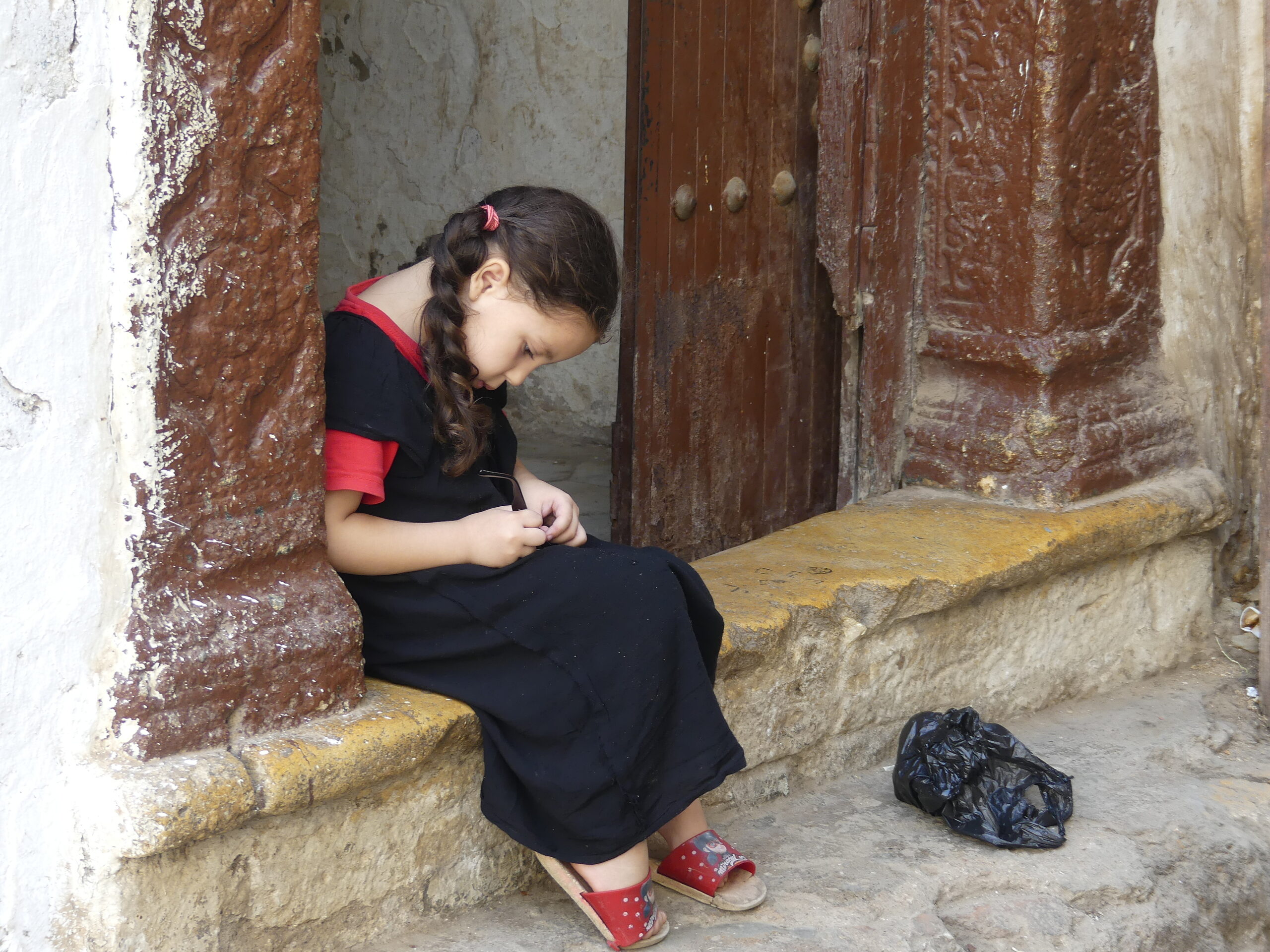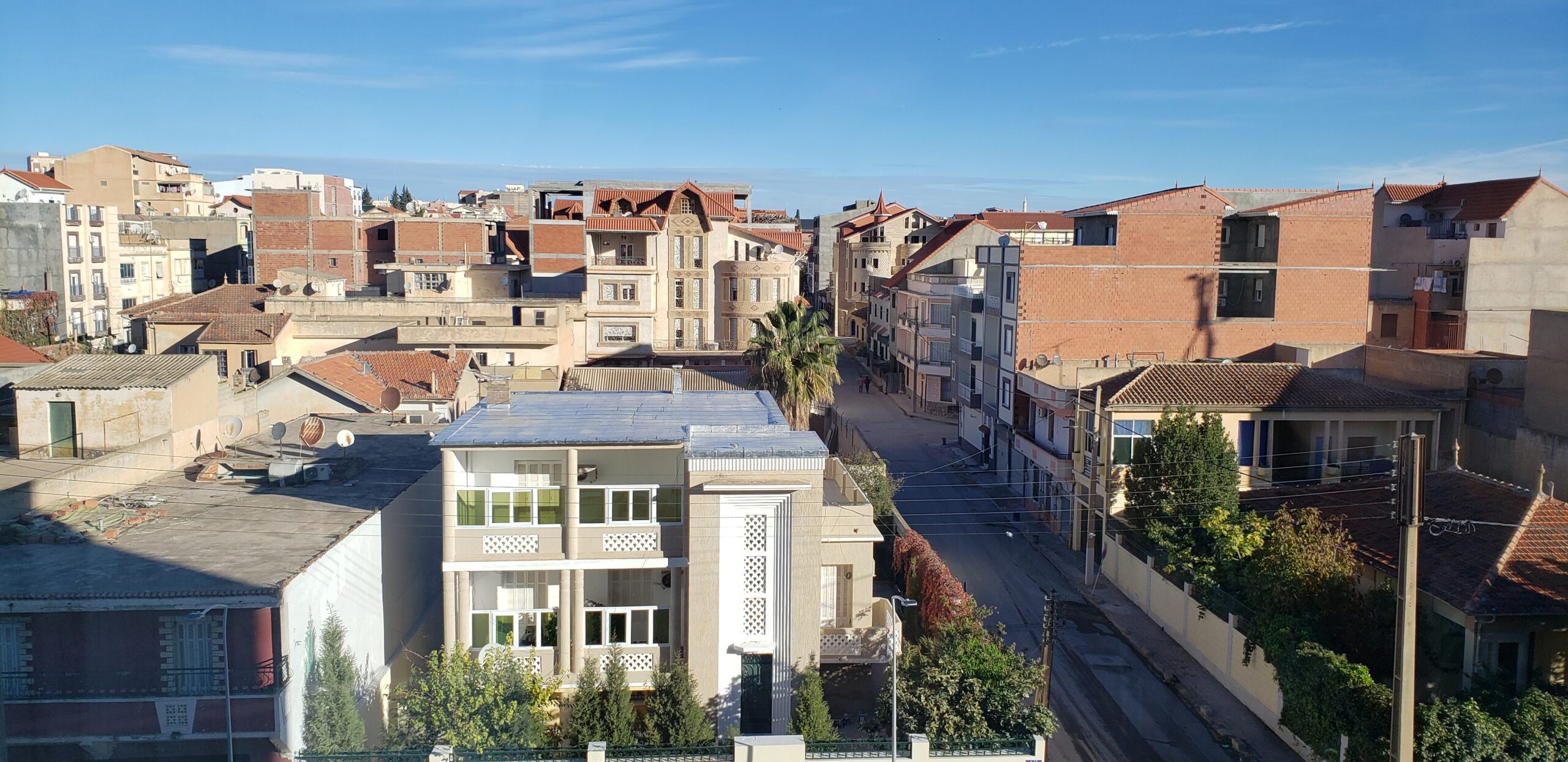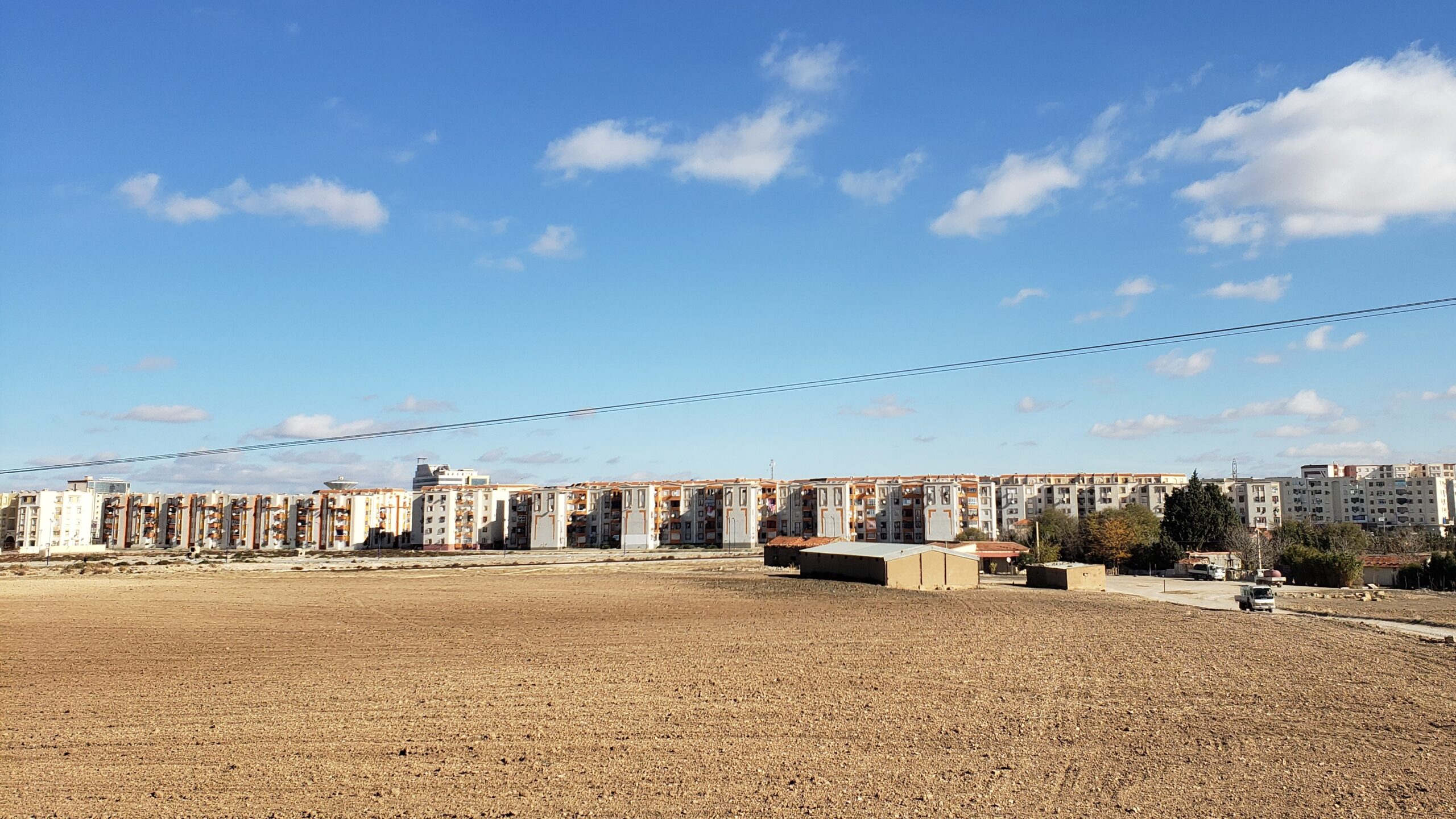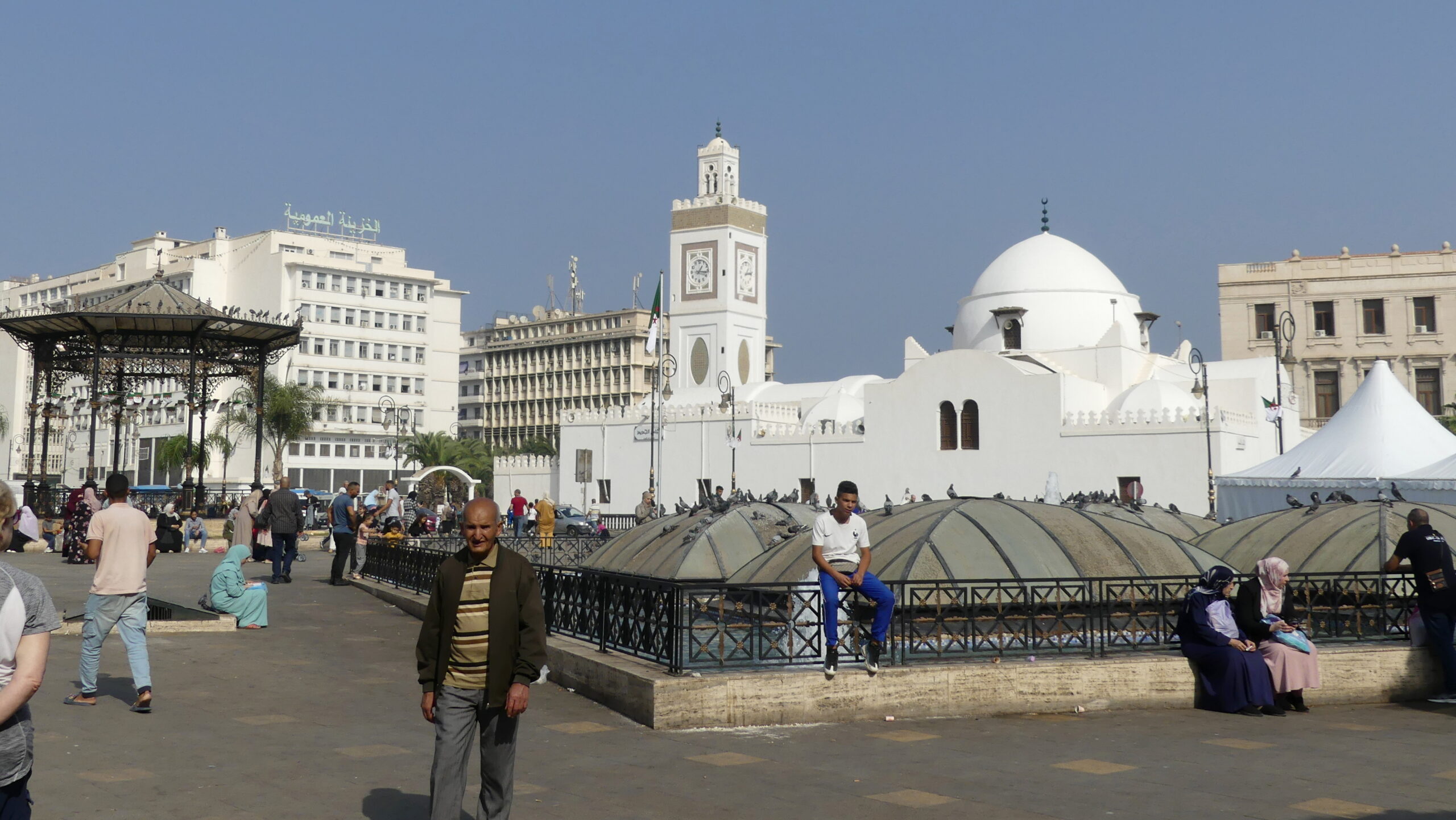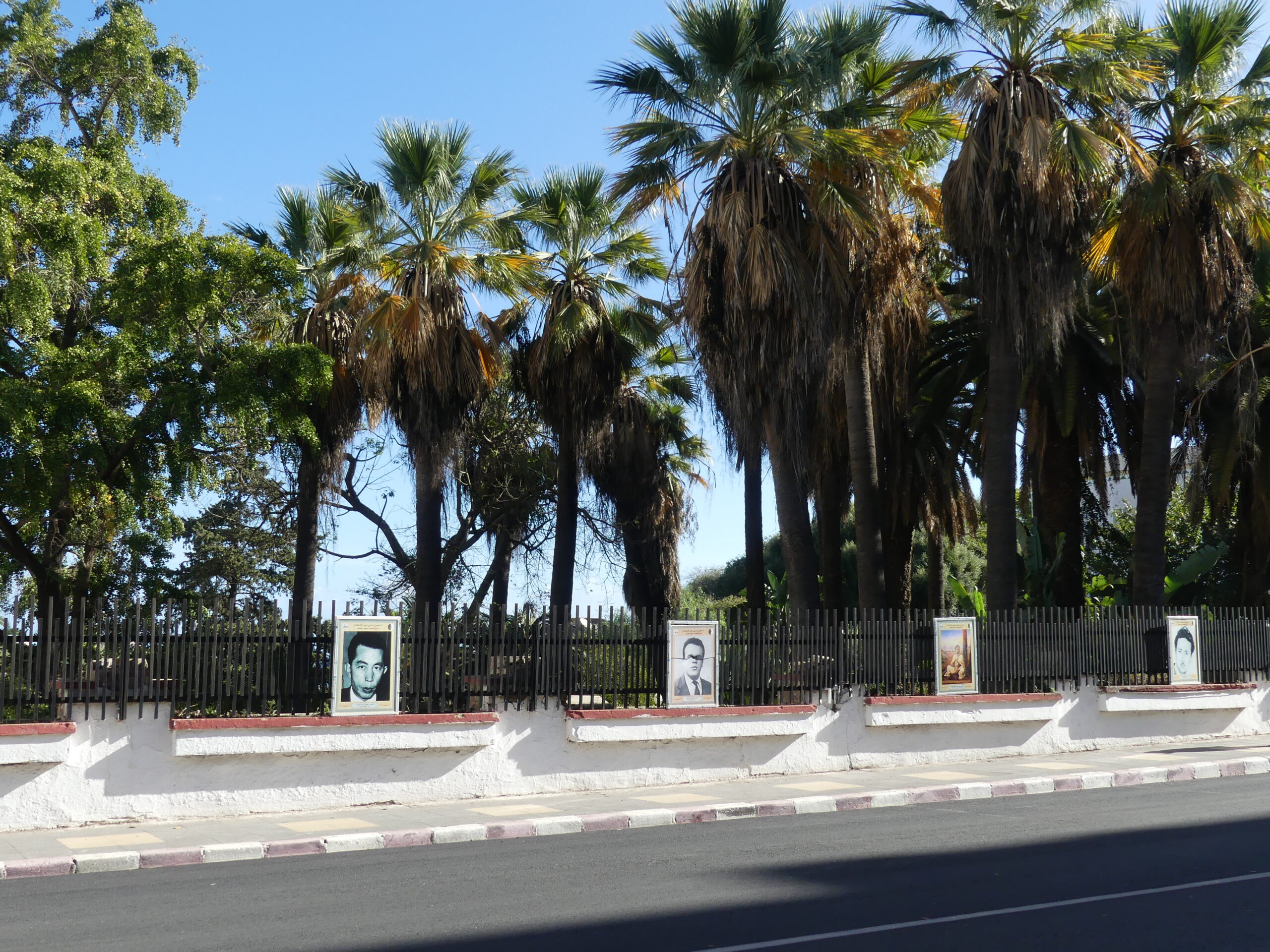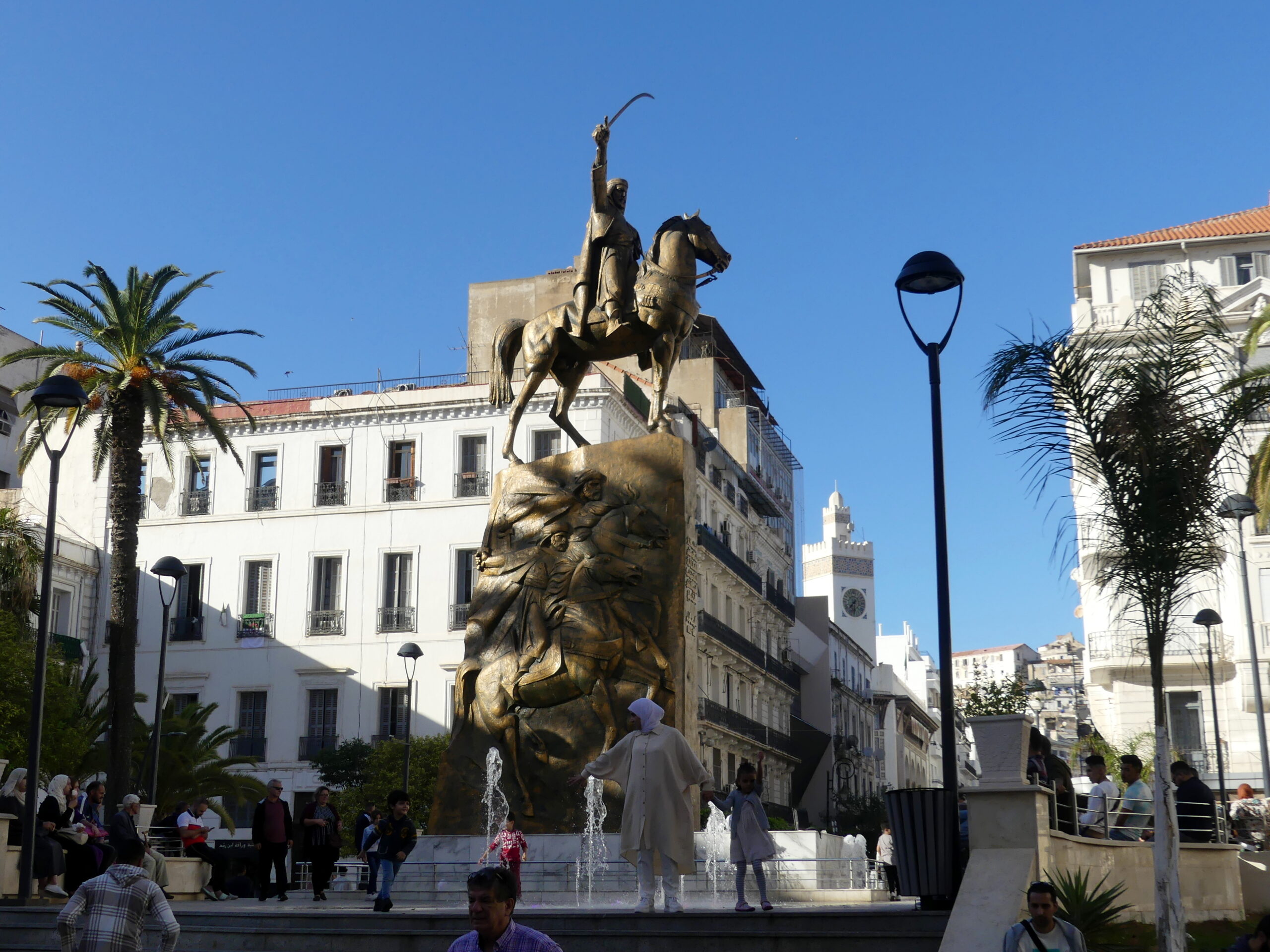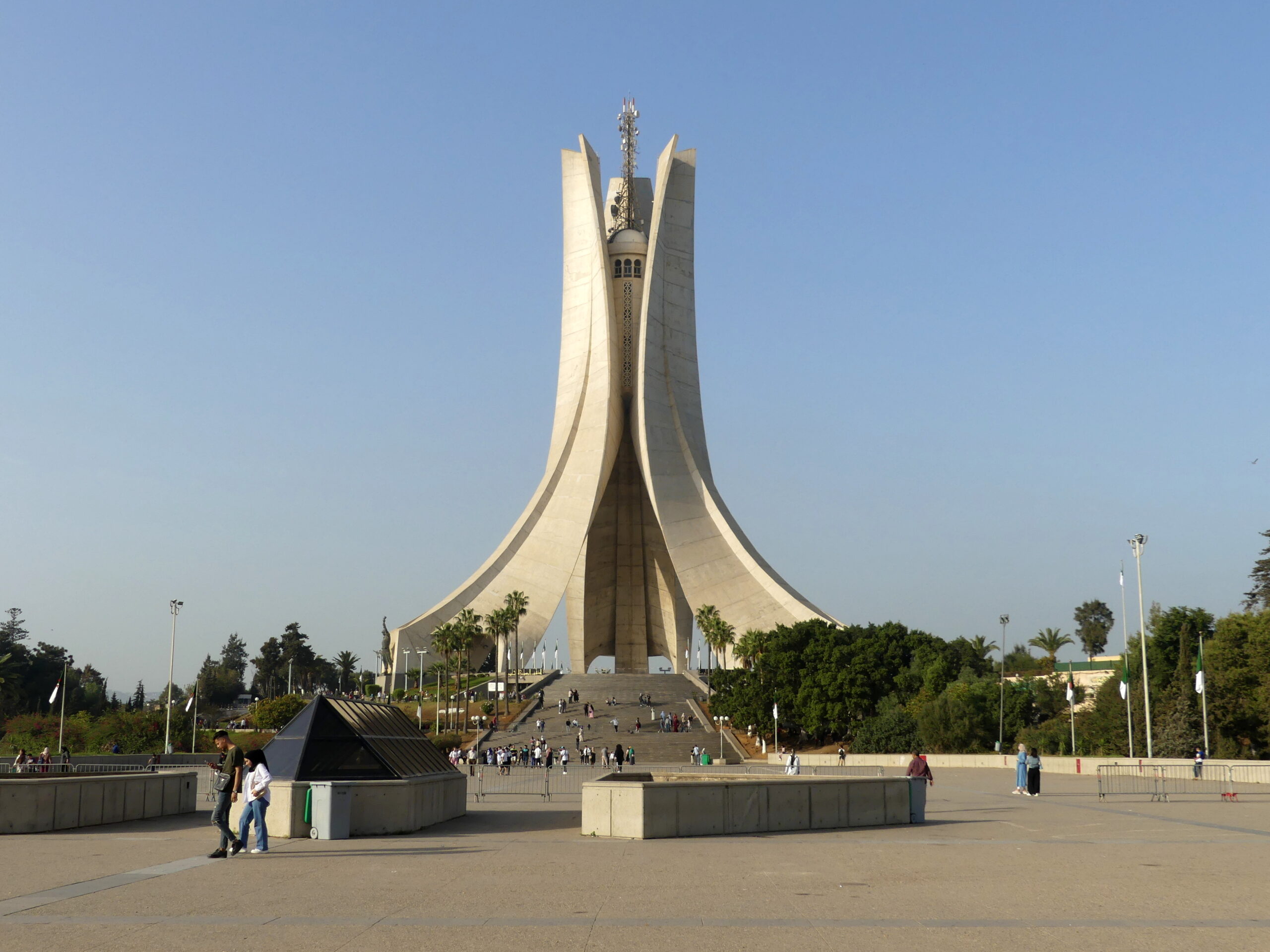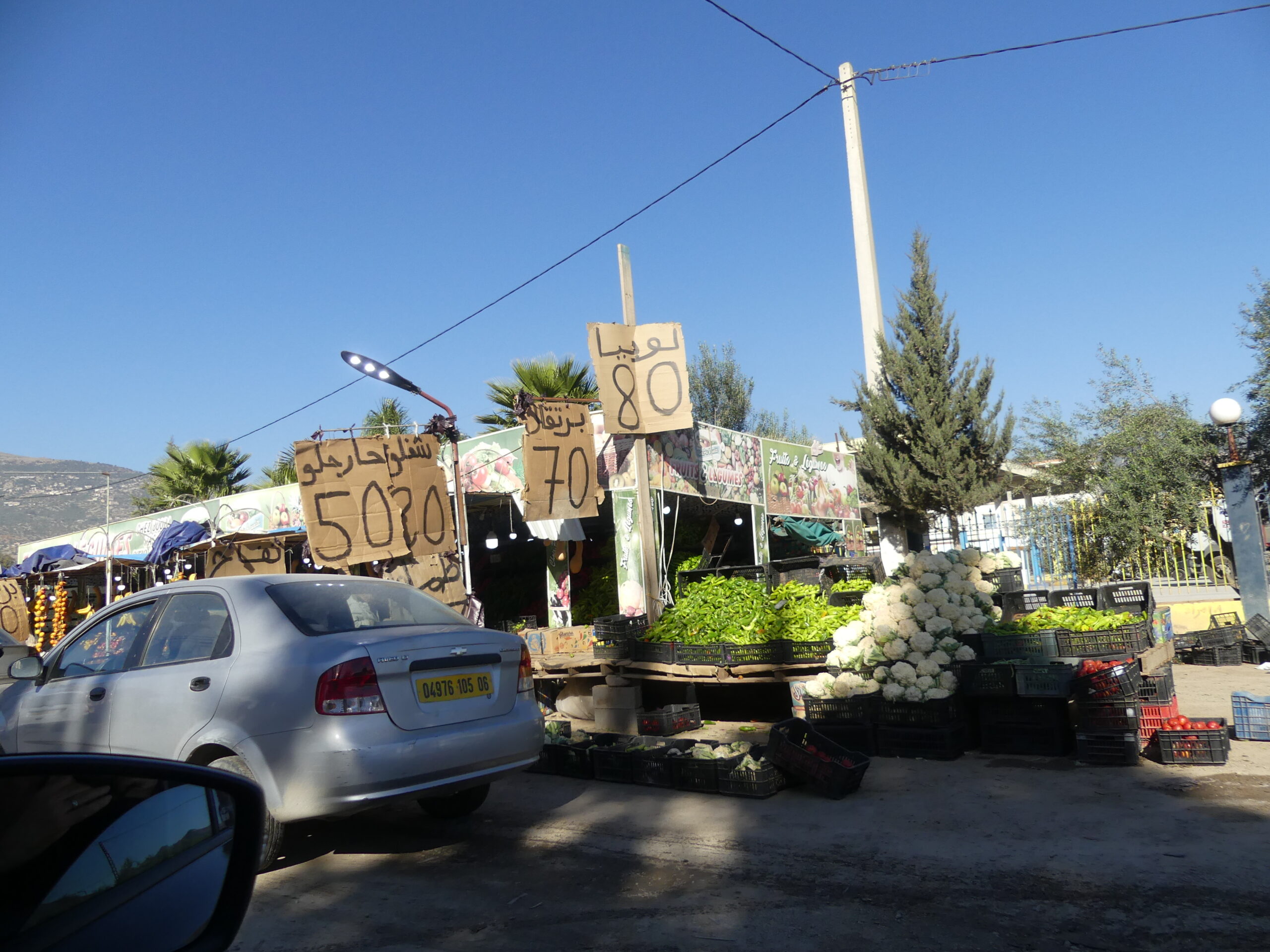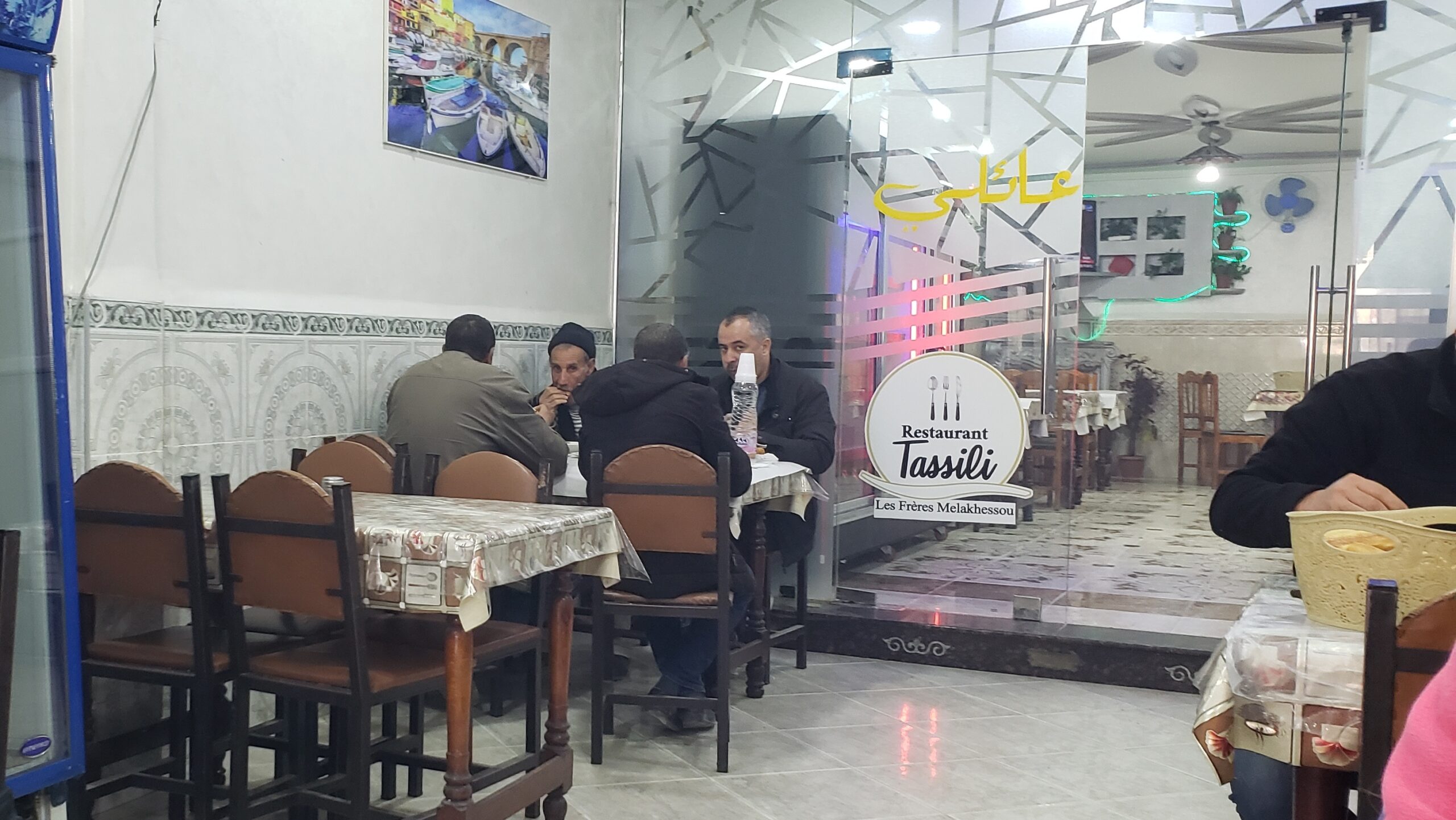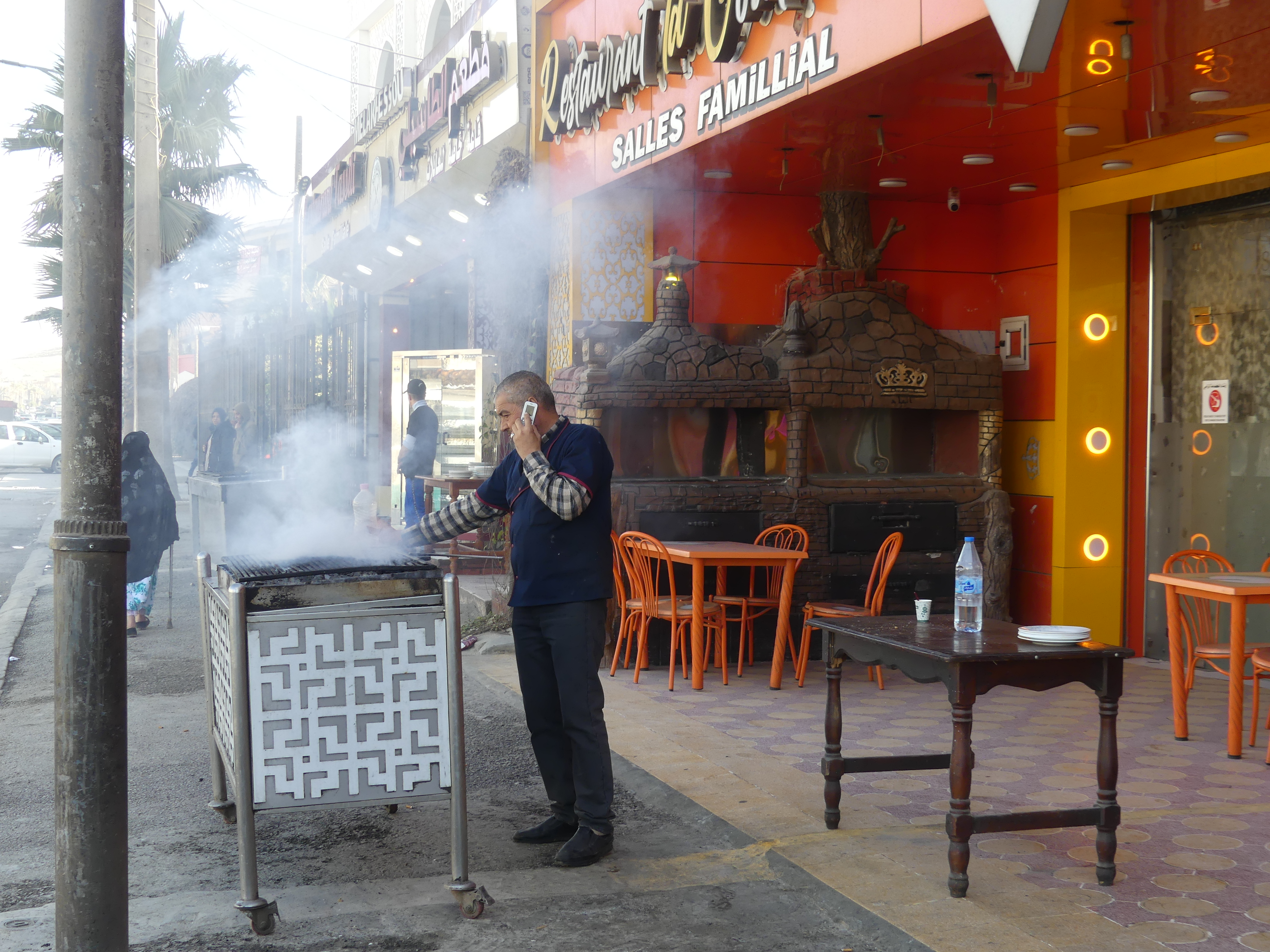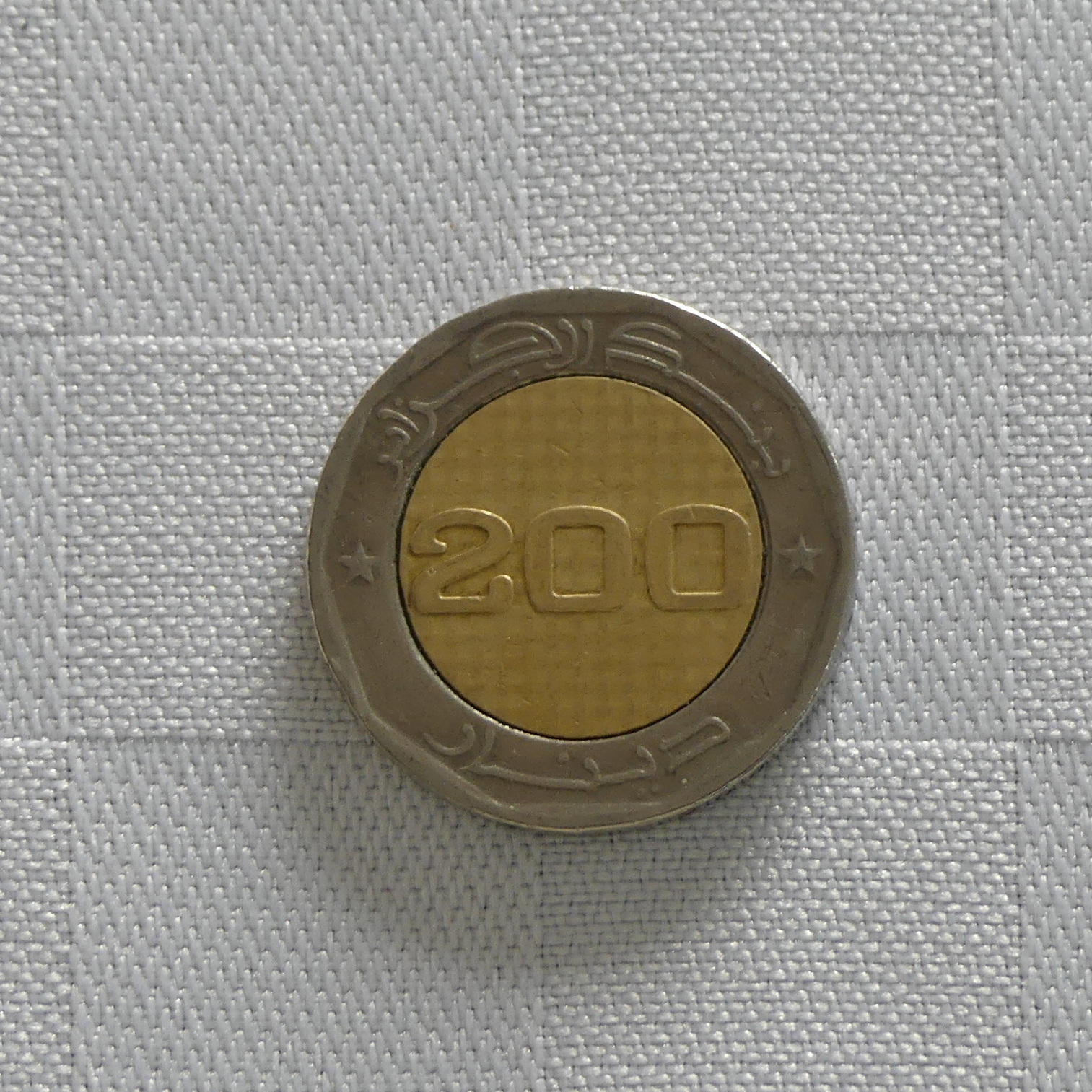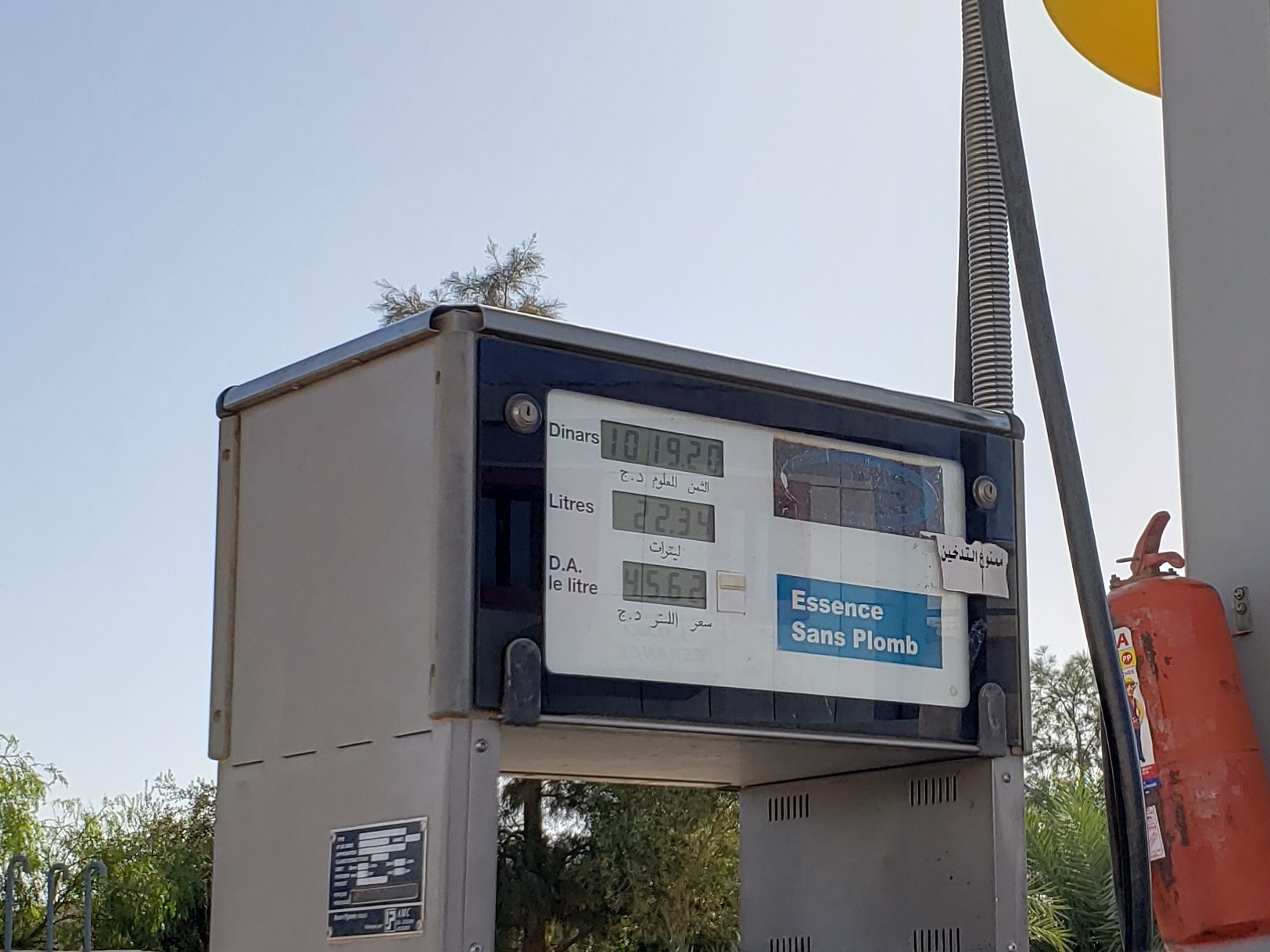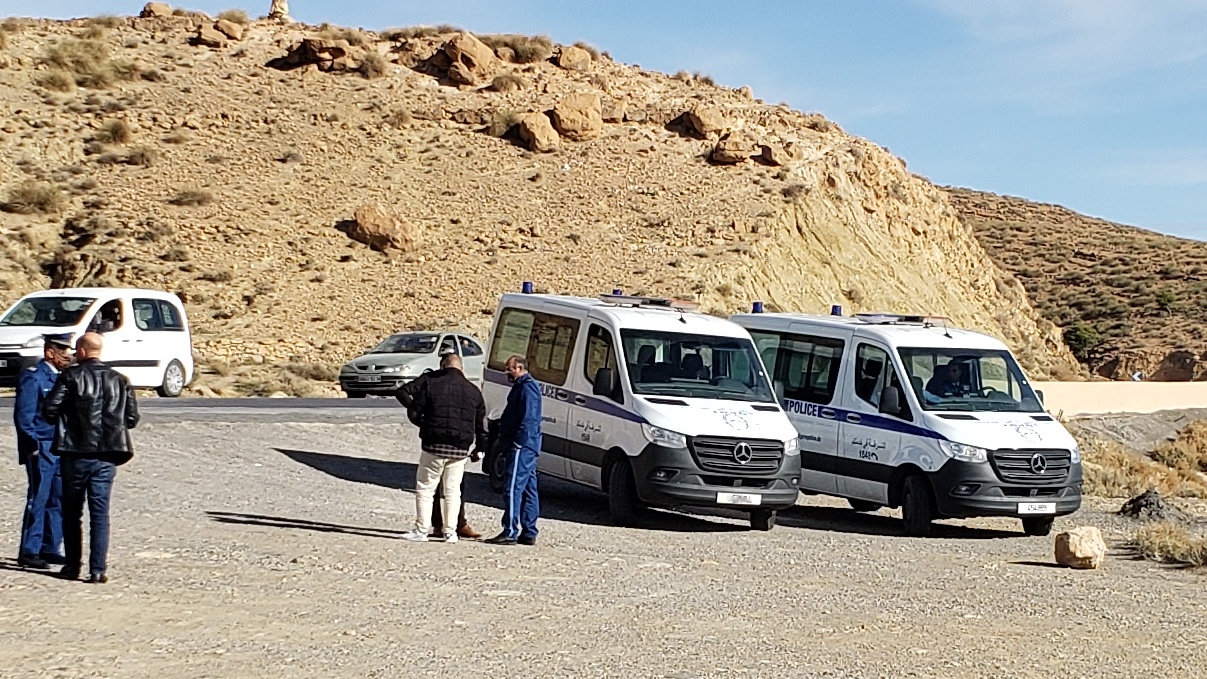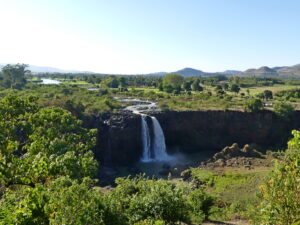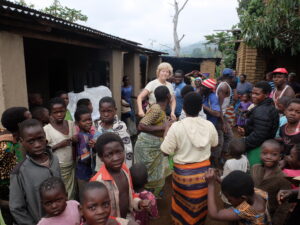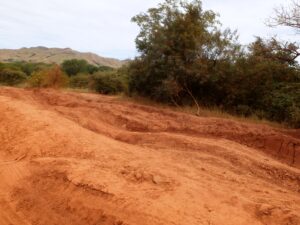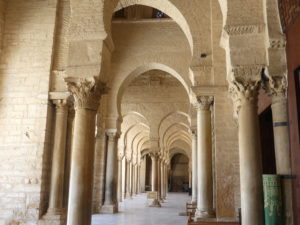In a month, we gained some feel for the culture of Algeria. Here are some of the observations we took away from our experience.
- It’s a largely middle-class population, relatively well-off and seemingly content. Algerians seem well off compared to neighbors like Tunisia. We detected many signs that economic opportunity was available to most, especially the young who are sadly too often neglected in other countries. The land is resource rich due to oil reserves and fertile plains, Algeria meanwhile has clearly invested in infrastructure, power generation and delivery, as well as providing housing. It’s hard to find a highway that is not edged by power transmission lines. The newer developments on the outskirts of this and other Algerian cities may look like unimaginative public housing, but there is so much of it sprouting everywhere to accommodate growth.
- The people take pride in their cultural achievements and long history. We saw many parents inculcating that pride in their children at history museums. Education is clearly a priority here anyway.
In Algiers, for example, we joined carfuls of locals on a cable ride up several hundred meters from the Botanic Garden, itself a vast natural space for educating children. Many family groups then roamed through the Military Museum. From detailed models of fortified cities and key battles, children learned about the glories of the Muslim empires that dominated Algeria and the region from the 7th to the 15th centuries. The history lessons went even further back to the Numidians who preceded the Romans.
- Welcoming with few tourists. Our experience with other Islamic countries is how friendly and eager to host are their people. Algerians demonstrated this character quite strongly, we felt, especially because they see so few tourists given the restrictions on moving around the country and rebellious unrest in the far south. Algerians were as delighted to see us engaged with their culture as for their children to learn.
- Among the recurrent themes is their heroic war of rebellion to gain independence, especially from the French takeover under Napoleon III in the 1830s. Even before that, however, Algerians needed to confront Spanish invaders and accommodate the Ottomans.
So one quickly notices how Algeria honors as martyrs the tens of thousands who died at the hands of the French especially after WW II, as well as militants like Emir Abdelkader over 100 years earlier. One memorial in Algiers is the grassy space extending from busy Martyrs’ Plaza. The old mosque at the back dates from the Moorish period at the end of the 11th century.
Elsewhere around the country, posters or tributes honor specific individuals, instrumental in gaining independence or killed by the French during the conflict. Notably, attached to the fences around most parks are large portrait photos of these heroes to ensure that people recall the country’s difficult struggle.
- The Military Museum also honors the long fight for independence starting with Abdelkader onward through the liberation from France. More dramatically, across a huge plaza on the same plateau, families visit the soaring monument that honors as martyrs those killed in the war for independence.
The Land

Algeria is a large country on the map, though the preponderance is desert. Overall, we found a surprisingly diverse landscape, with enough variety to engage anyone who visits here, encompassing:
- Mediterranean – coves and lengthy beaches like southern France; with frequent bluffs and headlands even in cities;
- Rolling hills and fertile valleys, making Algeria a bountiful grain producer;
- Limestone mountainous terrain, arid forests;
- Sierras linked to the Atlas Mountains;
- Saharan deserts of creamy sands and oases; and
- High desert of mountains and scrubby flatlands.
(For other photos of the landscape, see the other articles from Algeria. Click here.)
Dining and Wining – Food
You’ll never go hungry on the road. And it’s all dirt cheap (heh, heh). So many truckers use the major and minor roadways that restaurants, cafes, superettes are plentiful even in the countryside. But best yet are the hut-like stalls along the roads, notably at choke points that slow traffic, each packed with seasonal fruits and vegetables from nearby farms. Or the smaller pop-up shops by local farmers with the freshest of yields.
November seemed to be the time for oranges, gorgeous cauliflower, peppers, tomatoes, potatoes, and bananas (!!). And it’s all good for you too…bio and grown naturally, we’re told. Similar stalls sometimes offered other local products like clay pots or long colorful dresses. Those last items, we thought, might suffer a bit from the dusty conditions stirred by trucks on the road.
Despite the wonderful food for sale at these stands, we had no kitchens for cooking. At first we despaired at finding cooked options for vegetarians, what with the meat cravings of Algerians. After a while, however, we discovered how veg-friendly the cuisine could be. Many restaurants offer an array of veg dishes – regional variants of shakshouka, other local specialties of vegetables cooked with grains and sauces, overcooked beans, white bean soup, puree, potato and onion, harissa or hamissa, fresh salad. We learned how to eat quite well. Cities offer these same options mixed in with more formal restaurants as Europeans might expect.
In the photo above, as often happened in Algeria, the people at the table just visible on the right soon started a conversation with us, curious about who we were and pleased to welcome us. And see also our article about Ghardaia, where we dived in at a truck stop (Click here).
For meat eaters, these offerings can be supplemented by roast chicken or skewers, fish, meats including thoroughly cooked liver – all grilled on an ashen BBQ on the sidewalk outside the restaurant. In case of serious hunger, every table features a large bucket of baguettes to complement the food.
Large portions cost only 200 to 300 dima (a few dollars or euros) per hefty serving. While coffee shops seemed to be exclusively male, most restaurants catered to women also, notably when the advertised a salle familiale, a separate area for mixing of the sexes. Interestingly, patrons usually receive no final bill, but pay for the food as they leave with an honor system: we would recite to the cashiers what we ate, and they toted up the price.
Drink
As with many other Muslim countries willing to accommodate tourists and less religiously observant residents, alcohol can fe bound around most towns – though not easily at first. The international hotels and some higher end restaurants offer wine and spirits, though most eateries do not. Sugar and fruity drinks are plentiful. It may seem odd, therefore, that Algeria has quite a few vineyards and a brewery. These make a pretty good product. There seems to be enough market that some of the fertile countryside, normally dedicated to grain production, is profitably dedicated to growing grapes and perhaps hops as well.
For home consumption, you need to find the few Wine Shops around town. You typically find these at a somewhat hidden, no frills recessed – often detectable by the swarm of young men or vehicles in front of it. In stricter towns, you need to dare visiting the industrial zone, the one that everyone warns you about. But, even in these less savory locations, no one troubled us; rather, they were amused and pleased to see us join in. The Sin tax makes the alcohol expensive for locals: at the hideaway stores, the lowest price wines cost $5 to $8, a lot relatively to food costs, with superior wines much higher. Half liter beers cost $3 to $5, about the price of a good meal in a local restaurant. In some towns, where limitations are stricter than Algiers, the price might soar higher.
Money
Early on, we discovered how tricky it is to determine prices. That’s not because merchants aren’t forthcoming; it’s because they speak of money in a kind of shorthand, including the name. Appropriately, ‘dima’ is the more frequently used street name for the dinar.
Let’s say this 200 dima coin (or about 1.50 USD or EUR) would cover your cost of a purchase. The seller would typically ask for 20, lopping off the last digit. An Algerian with a bit less command of French or English might ask for 2000, confusing the terms ‘hundred’ for ‘thousand’. It took us a while, after becoming accustomed to costs, to get over the confusion. Fortunately, the cost of goods and services proved relatively low for travelers like us. Not quite 20, but certainly not 2000.
Algeria was quite reasonable in cost compared to European countries despite an artificially elevated official rate controlled by its central bank. The gap fosters a market for money changing that is quite public. In certain busy squares of the major cities, you can find a host of money-changers offering better deals than the official exchange rate of 140 per dollar during our visit. If you shop around, you can get an exchange rate of perhaps 200 dima per dollar. Yet, there is a huge caveat in taking advantage of this currency market. It seems that many of the dima bills you receive will be counterfeit. You need a sharp-eyed local to tell the difference. With prices moderate anyway, we stuck with the official rate.
Driving
Algeria has developed a lot of good, well-maintained roads, though perhaps with not enough highways to handle increasing traffic. Traffic inevitably halts and stutters at towns, as the many trucks – moving at slow in-town speeds and delicately easing over road bumps – clog things up. In cities, jams last all day long.
Oddly, road bumps also frequently interrupt the highways, slowing traffic movement there too. You cannot rest in auto-pilot even at highway speeds, or a bump could do some damage to your vehicle.
Cars abound though young people say they are much too expensive, at least to buy new.
Fuel is very cheap, about 30 cents per liter ($1.20 per gallon), as Algeria produces quite a lot itself.
Those roadside power lines everywhere, even in the desert, demonstrate also the intense commercialization of resources like oil and gas, as well as population expansion.
The Oddest Element: Security
There do seem to be a lot of police around. So many are posted on city streets keeping an eye out for something, most noticeably when high-level visitors come to town. Police checkpoints are all too frequent on highways and secondary roads, especially as one heads southward away from the Mediterranean. We saw a lot in Tunisia as well, but Algerian checkpoints seemed even more plentiful. They appear to be enforcing rules and registration requirements, but we’d also heard about governmental concern about terrorists and rebels, especially in the far south. The checkpoints exacerbate the slowdowns in traffic; nor do the traffic police help much with the clogs despite their game efforts.
Perhaps the oddest feature of our trip though was the added layer of “protection” given to us outside of Algiers. You can’t really travel much here without an escort on the roadways, or extra checking at airports. Officials explain that this is for our protection, as there have been some headline incidents long in the past. Someone is surely worried given how much money and personnel hours were expended on just two foreigners like us.
At Timimoun airport in the southern desert, official personnel took our passports to copy and then handed us over to a green and white jeep with a couple of officers. At the edge of town, we needed to register ourselves again, but then were not tailed for the most part as we visited the town, dunes and outskirts. Yet, on a day when we were walking on our own, a team of two police followed us into the desert, through a village, as well as over ravines and water channels.
With the exception of uniforms, that was how it generally worked as we walked through cities. A plainclothes policeman accompanied us, often volunteering information or steering us toward our destinations.
Between cities and while entering, a police team from each jurisdiction sequentially led us to our destinations.
So, at the border between police districts, we dropped one security force, a vehicle with say 2 or 3 police, and picked up another. The handoff sometimes went smoothly, with remarkable coordination of timing, other than saying hello to the new team and supplying it with another one of the dozens of copies of our itinerary. But quite often we needed to wait for the next team. A half hour could go by while we idled alongside a desert road, or sat tucked into the curve of a large traffic roundabout, or warily stopped at a highway ramp. On some days we tallied up to 30 different policemen (yes, almost always men) in up to a dozen teams leading the way for us. The photo shows a stop near a reservoir where three different vans and their police collected for us.
This security blanket has to hamper tourist interest in the country, but for us eventually it just became a necessary feature of moving about. Unlike in Tunisia, we were not allowed to drive ourselves, perhaps to make sure we conformed to the security rules. But we saw few, if any reasons, to be concerned. Quite the opposite: everyone welcomed us warmly and graciously.
Our drivers, however, seemed to like the system as the police created places for us to park in the cities (plus watched the car). On roadways, they did their best to cut past traffic jams, with a variety of sirens blaring. The larger the vehicle, like a Mercedes van, the more it could push its weight around. But amusingly many drivers paid little attention to the noise (not an ambulance, so ignore it?). Many traffic jams would not open up for us, even with the sirens. We thought we should be waving at onlookers curious about the police activity and wondering about the VIPs within our car.
Police were not stern or forbidding in any way, generally greeting and sending us off with many smiles. When we found a common ground in our broken French or their broken English, we had some very pleasant conversations. They were as intrigued with us as were so many other people we met across the country. On one walk into a national park, a security man followed us and then joined in to comment on what we were seeing, sharing an appreciation of its natural beauty, and talked politics with us. In the cities, they often acted as informal guides. Many even located the hidden alcohol depots for us despite their grey-market.
We did adjust to the situation, as we had to, but not without a kind of creepy feeling at times. Early on, in Oran, when our accompaniment first began, we were instructed to let our driver know if we went for a walk on our own. Without bothering to alert him, however, we went off to see some neighborhoods, have lunch, and take a promenade on the bluffs along the sea. The next day we admitted what we had done, and, we said wryly, missed the security guys. He claimed we were surely followed. We were astonished, thinking back, that someone could have followed us the whole day without our noticing. Was there really a shadow on our trail? And how could we not notice them when we made a mad dash across a six-lane highway to return to our hotel??
(To enlarge any picture above, click on it. Also, for more pictures from Algeria, CLICK HERE to view the slideshow at the end of the itinerary page.)


